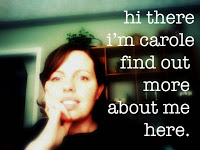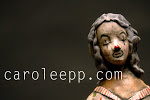With the August 21st opening of the ‘Beyond Limitations’ exhibition, the journey of this five-week workshop came to a conclusion. The workshop started from a proposal made by Australian artist Vipoo Srivilasa two years ago. The workshop’s successful implementation was then facilitated by Cho Hyeyoung (director of the 2015 Cheongju International Craft Biennale), who has helped to bridge Australia and Korea through both material and moral support over the past year. In Australia, meanwhile, Srivilasa prepared zealously to ensure the program’s success. In my own preparations for this project, I could sense their fiery passion.
After a year and a half of preparations, the workshop began on July 20th, and we worked without stopping all the way till its final day. Despite the sultry weather, the 21 artists and the support staff were totally immersed in the workshop from morning to evening, not even noticing the time passing. For a ceramicist, five weeks is not long enough to follow a project through to its completion. That is owing to the nature of ceramics, in which each stage requires a lot of handwork and waiting; it is only in the final stage of firing that the work can be completed. For that reason, I was dubious about the amount of artwork those 21 artists could complete over the course of the workshop, and I suggested that the artists each bring one piece with them. My thinking was that the pieces they brought along could be exhibited together with the artwork produced during the workshop, even if those works were
not finished…
 But such concerns evaporated completely. From morning to evening, the artists were fully engaged in their work. As a result, within five weeks, we started to worry about whether the galleries could accommodate display space for all the pieces, which numbered beyond expectations. The initial plan had been to use two galleries, but to exhibit all those works invested with the artists’ passion, we ended up needing all three galleries. Seeing the level of completion and refinement of the works produced during the workshop, notwithstanding its short duration, gave me an indescribable feeling of pride as a curator. With every artist working all the way to the very end to help display the works and complete the exhibition set-up, and with its successful opening, we all felt as if we were one.
But such concerns evaporated completely. From morning to evening, the artists were fully engaged in their work. As a result, within five weeks, we started to worry about whether the galleries could accommodate display space for all the pieces, which numbered beyond expectations. The initial plan had been to use two galleries, but to exhibit all those works invested with the artists’ passion, we ended up needing all three galleries. Seeing the level of completion and refinement of the works produced during the workshop, notwithstanding its short duration, gave me an indescribable feeling of pride as a curator. With every artist working all the way to the very end to help display the works and complete the exhibition set-up, and with its successful opening, we all felt as if we were one.

We also had a number of successful projects that had seemed impossible to fit into five weeks’ time. There were two cultural tours, and every evening there was time for artists and staff to gain greater understanding of one another, as they took part in presentations on each other’s artwork and stories and held discussions. Special guest ceramic artists were invited, too, including Kang Hyo Lee, whose dynamic performance we enjoyed, and HunChung Lee, who shared stories of the art world and his life as an artist. Besides these activities, members of the public also were invited to take part. For instance, local residents had hands-on experience in making book holders patterned with Australian aboriginal art, and at a ‘performance’ (artist lunch), museum visitors were served food by Korean and Australian artists. All these projects were a great experience for the artists, the museum, and the
assistants.


Just as the theme of the workshop suggests, I think the entire process contributed to the artists going beyond their own limitations. By sharing diverse techniques and ideas in contemporary ceramics, while also going beyond national borders, and beyond the boundary lines of ‘mentor’/‘mentee’ and ‘artist’/‘staff’, the workshop was an opportunity for everyone to go beyond their limitations. I truly hope that this workshop offered a chance for forward progress to artists facing a creative block, and for new impetus to artists seeking fresh ideas. I would like to express my gratitude to the exhibition planning team and the museum assistants who enabled the successful completion of the workshop through their support; to the project team that provided five weeks’ worth of delicious meals; and to all the artists who took part in the workshop.
-By Kim Seungtaek, Curator of Clayarch Gimhae Museum



For more information about the program and the participating artists please visit www.claymentoring.com
The Beyond Limitations project has been funded with supported from Clayarch Gimhae Museum, Australia – Korea Foundation and The Australian Embassy Seoul














Hi Mr Kim, thanks for putting this article together and spreading the news about the mentoring program. I look forward to seeing the book you are publishing to coinside with the exhibition of the works we prodused in korea.
Many thanks
Stephen
[email protected]